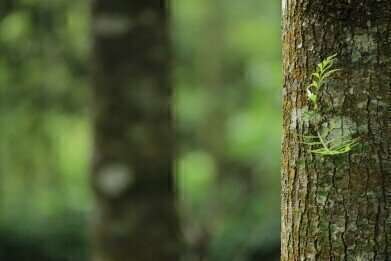Environmental Laboratory
5,000-Year-Old Scottish Tree Undergoes Remarkable Sex Change
Nov 06 2015
A tree that has stood for thousands of years has displayed signs of changing its sex this autumn, say experts. The tree in question has stood for up to 5,000 years in a village cemetery in Fortingall in Perthshire, Scotland, and for the previous few centuries (since records began) it has been classified as a male. Now, it is exhibiting signs of switching to the female gender.
The tree belongs to the European yew genus, which is separately-gendered. Only the females are capable of producing berries, while the males generate pollen. After hundreds (and perhaps thousands) of years, the tree has finally undergone a sex change, it appeared, when it sprouted its first berries this autumn.
Old Habits Die Hard
With the forefront experts placing the Scottish tree at somewhere between 3,000 and 5,000 years old, it remains the oldest living organism in Europe (including the amazing case of 1,500-year-old moss which was brought back to life after being frozen for centuries). In fact, its age indicates that it was flourishing even before the Romans attempted to invade Scotland and built Hadrian’s Wall, cerca 80 CE. Indeed, local legend has it that Pontius Pilate even played in the shadows of the great tree as a child – though coming from a land which propagates the existence of the Loch Ness monster and wild haggis, perhaps such an assertion should be taken with a pinch of salt.
Now, after all this time, it is finally beginning to display female characteristics, flowering with the female-only berries that characterise the gender. The berries were discovered by Dr Max Coleman, a scientist at the Royal Botanic Gardens in Edinburgh, who will examine the berries along with his forensic team for further analysis.
“Yew trees are male or female usually and it is pretty easy to spot which is which in autumn – males have tiny things that produce pollen and females have bright red berries from autumn into winter.” Dr Coleman explained to the Press Association. “This process may have happened before but we know the Fortingall yew has been classed as male for hundreds of years through records. The sex change isn’t the amazing bit in this case, it’s the fact it’s this particular tree.”
Sex Changes not Uncommon in the Natural World
Contrary to what you might think, such a sex change is not unusual among trees or other organisms – it’s only the fact that this tree has remained classified as a male for so long and is finally changing gender that’s striking. Indeed, ash trees are renowned for sometimes switching sex from year to year, producing berries one year and flowers the next.
Meanwhile, it’s fairly common knowledge that fish can change sex. They are easily affected by the oestrogen found in their habitats, and indeed the smallest amounts leaked into the sea or river where they dwell (usually via human activity) can cause them to change sex.
Recently, it was discovered that such contamination could also affect crustaceans – namely shellfish. However, unlike the fish, the shellfish appear to be able to control their gender and resist such changes, essentially “locking down” their sex. Although the exact reasons for this are unknown, Dr Alex Ford from the University of Portsmouth believes that further revelations about the diverse crustaceans are on the horizon.
“Crustaceans are the most diverse creatures in our oceans and, until now, we didn’t know a lot about their molecular biology,” he said. “By publishing the entire set of genes we are giving biologists a whole suite of tools to further study many aspects of their biology including their endocrine, nervous and immune systems.”
Digital Edition
IET 34.2 March 2024
April 2024
Gas Detection - Biogas batch fermentation system for laboratory use with automatic gas analysis in real time Water/Wastewater - Upcycling sensors for sustainable nature management - Prist...
View all digital editions
Events
Apr 30 2024 Melbourne, Australia
Apr 30 2024 Birmingham, UK
May 03 2024 Seoul, South Korea
May 05 2024 Seville, Spain
May 06 2024 Minneapolis, MN, USA


















